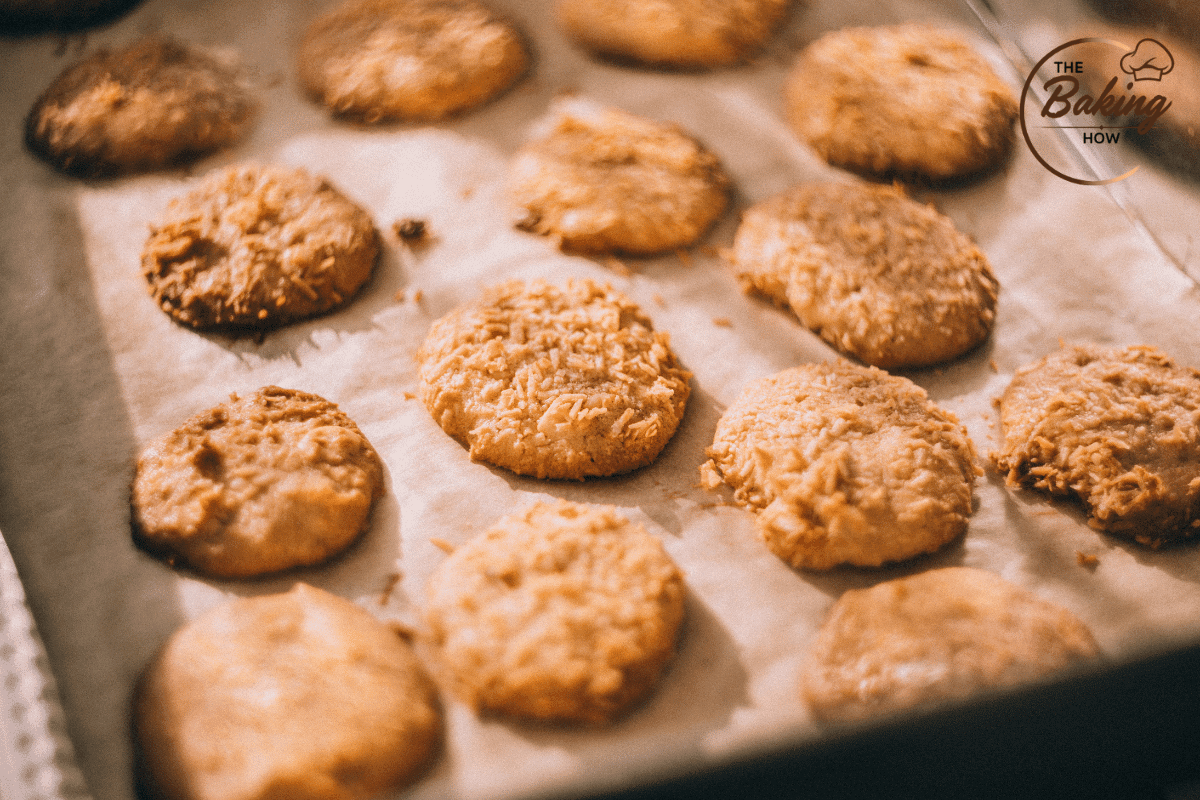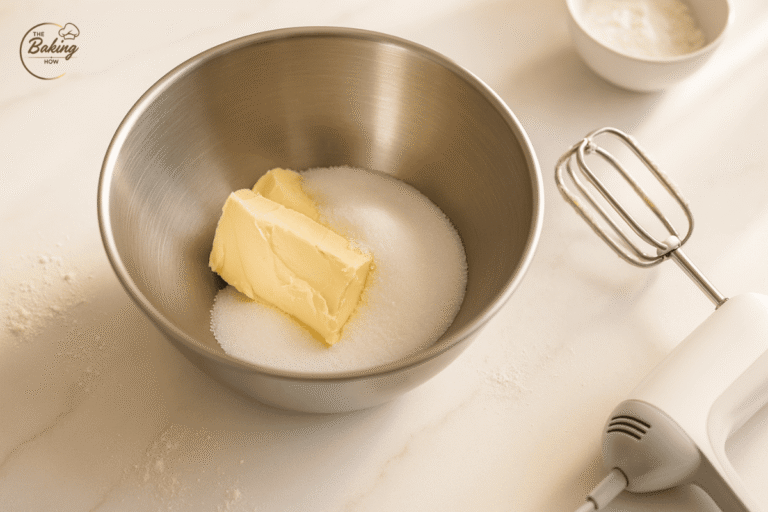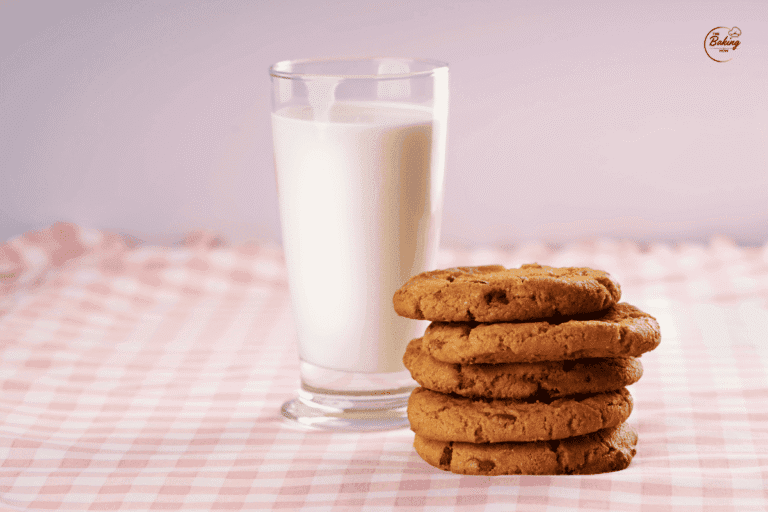Why Are My Cookies Hard as a Rock? 8 Easy Fixes for Soft, Chewy Results

Have you ever baked cookies with high hopes, only to pull them out of the oven and find they’re hard as rocks?
You measure your ingredients, mix them, shape the dough, and wait eagerly. But the first bite leaves you wondering: Why are my cookies hard? Don’t worry — you’re not the only one. In my 17 years in the cookie industry, I’ve seen even experienced bakers face this problem more than once.
Hard cookies usually happen because of low fat content, not enough liquid ingredients, poor emulsification, too much flour, too much sugar, wrong leavening agent, incorrect mixing, wrong baking temperature. The good news? Every one of these issues has a simple fix.
In this guide, we’ll break down every possible reason your cookies turn out hard — and show you practical, bakery-tested solutions to prevent it next time. Plus, I’ll share a few tricks to soften cookies after baking, so you can still enjoy them instead of tossing them away.
Major Causes and Fixes for Why Are My Cookies Hard
Cookies can become hard and crunchy due to several baking science factors. The most common culprits are low fat content, not enough liquid ingredients, poor emulsification, too much flour, too much sugar, wrong leavening agent, incorrect mixing, wrong baking temperature. Let’s break down each cause and see how to fix it.
🧈 Low Fat Content
Why Low Fat Makes Cookies Hard
Fat is essential for cookie texture development. It coats flour and sugar particles, creating a smoother mouthfeel and preventing excess gluten formation. During baking, fat melts and allows the dough to spread evenly, which helps set a tender, soft structure.
When you use too little butter or shortening, the dough won’t spread properly. This leads to cookies that are dense, overly crunchy, or even hard as a rock. The way fat is incorporated into the dough is critical. The creaming process creates tiny air pockets, and understanding this is key to avoiding a hard, dense cookie. To go deeper on this topic, read my complete guide on the role butter plays in cookie texture.
🔗 Related: Why do My Cookies Spread Too Much
Expert Insight: In my 17 years working with cookies, I’ve learned that fat balance is just as important as sugar or flour ratios. A shortage of fat almost always means a tougher bite — something we actively avoid in commercial recipes.
🛠 How to Fix Dough with Too Little Fat
If your dough is lacking fat, try these adjustments:
- Add 5–10g of butter, shortening, or margarine — this small change can transform texture.
- Use biscuit shortening for better spreadability — especially for soft-bake cookies.
- Avoid cutting fat to “make them healthier” unless replacing with an alternative that still provides similar tenderness.
💡 Pro Tip from 17 Years of Baking
For home bakers, you can make your own shortening:
Heat vegetable oil gently, then pour it over ice. The rapid cooling turns it into solid shortening with higher spreadability than butter, producing cookies that are softer and more consistent in texture.
🏭 Industry Example
In large-scale cookie production, we rarely use pure butter. Instead, we use biscuit shortening blends — a cost-effective, stable fat with excellent spread properties. This helps us maintain texture consistency across thousands of batches, ensuring every cookie has the same bite and softness from the first batch to the last.
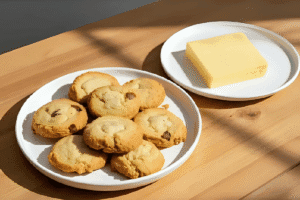
💧 Too Little Liquid
Why Too Little Liquid Makes Cookie Dough Hard
Liquid ingredients like milk, water, honey, or invert syrup are essential for achieving the right dough consistency.
They hydrate the dry ingredients, helping flour, sugar, and fats combine evenly.
When there’s not enough liquid, the dough becomes stiff and crumbly, which directly affects cookie texture.
In baking, soft dough = soft cookies — a principle we use every day in professional bakeries.
Expert Insight: In the biscuit and cookie industry, we monitor dough consistency with precision.
For soft-bake cookies, we intentionally keep dough slightly looser to ensure a tender bite after baking.
🛠 How to Fix Dough with Too Little Liquid
If your dough is too hard because it lacks moisture, here’s what you can do:
- Add 1–2 teaspoons of liquid at a time — use the same type of liquid from your recipe for consistency.
- Mix gently — avoid overmixing, which can make cookies tough.
- Rest the dough — letting it sit for 5–10 minutes allows the liquid to absorb fully into the flour.
🔗 Related: How to Fix Dry Cookie Dough
💡 Pro Tip from 17 Years of Baking
If you’re adjusting recipes, always balance liquid and flour.
For example, if you increase flour by 20g, also add 5–10g of liquid to maintain proper hydration.
This keeps your dough easy to shape while ensuring cookies bake with the intended texture.
🏭 Industry Example
In commercial cookie production, dough softness is measured with a dough consistency tester.
For soft-bake cookies, the dough is deliberately made more hydrated than for crunchy cookies.
This ensures uniform softness in every batch, even after packaging.
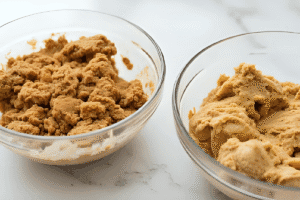
🥚 Poor Emulsification
Why Poor Emulsification Makes Cookies Hard
Emulsification is the process of combining fat and water-based ingredients into a smooth, unified mixture. In cookies, this step is crucial for even fat distribution and stable dough structure.
When fats and liquids don’t blend properly, you get uneven dough texture. This can cause the cookie structure to collapse during baking, leaving cookies flat, dry, and sometimes brittle instead of tender.
Expert Insight: In my 17 years of cookie production, I’ve seen that poor emulsification is one of the silent culprits of texture failure. Even if your recipe is perfect on paper, skipping proper emulsification can make your cookies unpleasantly tough.
🛠 How to Fix Poor Emulsification
- Use an emulsifier to bind fat and water — this ensures consistent dough texture.
- Cream fat and sugar thoroughly before adding liquids — this creates a stable base for emulsification.
- Add liquids gradually while mixing — dumping them all at once can break the emulsion.
💡 Pro Tip from 17 Years of Baking
At home, eggs are your best natural emulsifier. Even half an egg in a small batch can dramatically improve dough stability. For vegan baking, a mix of soy lecithin and aquafaba (chickpea brine) works surprisingly well to create a stable emulsion.
🏭 Industry Example
In commercial bakeries, we often use soy lecithin as our primary emulsifying agent. It allows fats and water to blend seamlessly and ensures consistent cookie texture across massive production runs. Without it, batches can vary — and in large-scale baking, inconsistency equals waste.
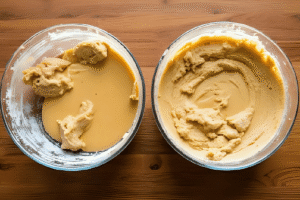
🌾 Too Much Flour
Why Too Much Flour Makes Cookies Hard
Flour is the structural backbone of cookies — but when you add too much, the protein (gluten) in it makes the dough dense and tough. Excess flour absorbs more moisture than intended, leaving cookies dry, crumbly, and hard instead of soft and chewy.
Over-measuring can happen easily if you scoop directly from the bag or pack the flour into the cup. Even an extra 2–3 tablespoons can dramatically change the texture.
Expert Insight: In my professional baking experience, I’ve seen home bakers blame butter, sugar, or even their oven — when the real culprit was simply too much flour in the dough.
🔗 Read more: Cookie Ingredients: The Role of Flour
🛠 How to Fix Too Much Flour
- Use the spoon-and-level method — spoon flour into your measuring cup, then level it with a knife instead of scooping directly.
- Weigh your flour using a kitchen scale for consistent results.
- If dough feels too stiff, add 1–2 teaspoons of milk or water and mix gently to bring back moisture.
Use our cookie ratio calculator to test different flour-to-fat ratios and see how they impact cookie texture.
💡 Pro Tip from 17 Years of Baking
If you accidentally add too much flour, rest the dough for 20–30 minutes before baking. This allows the flour to hydrate fully, making the dough easier to shape and slightly softer when baked.
🏭 Industry Example
In commercial production, even a 1% variation in flour weight can change cookie texture across thousands of pieces. That’s why bakeries use precise digital scales for every ingredient — consistency is the secret to maintaining the perfect bite in every batch.
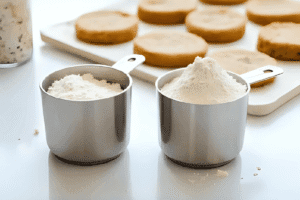
🍬 Too Much Sugar
Why Too Much Sugar Makes Cookies Hard
Sugar isn’t just for sweetness — it also plays a big role in cookie texture. When you add too much sugar, it melts and caramelizes excessively during baking. This can cause cookies to spread too much, become overly crisp at the edges, and harden as they cool.
Excess sugar also draws moisture out of the dough through osmosis, leaving the inside less tender. Instead of a soft, chewy bite, you end up with a cookie that feels dry and brittle.
Expert Insight: I’ve seen many bakers think extra sugar will make cookies more moist or flavorful — but in reality, it often leads to over-browned, crunchy results.
🔗 Read more: Why are my cookies too crispy?
🛠 How to Fix Too Much Sugar
- Measure sugar accurately using dry measuring cups or a scale — avoid “heaping” scoops.
- If you accidentally add extra sugar, reduce baking time slightly to prevent over-caramelization.
- Balance sweetness with a pinch more flour (1–2 tsp) or by slightly increasing fat content for a softer crumb.
💡 Pro Tip from 17 Years of Baking
For a better balance, use a mix of brown and white sugar. Brown sugar’s molasses content helps cookies retain moisture and stay softer for longer.
🏭 Industry Example
In large-scale cookie production, sugar percentages are carefully controlled — often down to the gram per batch. Excess sugar not only changes texture but also affects shelf life, making cookies more prone to staling.
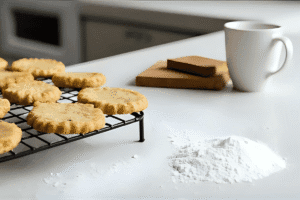
🧪 Wrong Leavening Agents
How Wrong Leavening Agents Make Cookies Hard
Leavening agents like baking powder and baking soda are responsible for giving cookies their lift and lightness. Using the wrong type — or the wrong amount — can cause cookies to rise unevenly or collapse after baking.
If the leavening is too weak or mismatched for the recipe, cookies won’t rise enough, leading to a dense, hard texture. On the flip side, too much leavening can cause rapid expansion, followed by collapse, which also results in tough, dry cookies.
Expert Insight: Baking soda is stronger and works best in recipes with acidic ingredients (like brown sugar or yogurt), while baking powder is balanced and works in recipes without much acidity.
🛠 How to Fix Wrong Leavening Agents
- Check your recipe to see whether it calls for baking soda, baking powder, or both.
- Use fresh leavening agents — old baking powder or soda loses strength over time.
- Measure precisely — too much or too little can ruin the texture.
- If substituting, adjust quantities:
- 1 tsp baking powder = about ¼ tsp baking soda + ½ tsp cream of tartar.
💡 Pro Tip from 17 Years of Baking
If you’re experimenting with recipes, test small batches first when adjusting leavening. This avoids wasting a whole tray of cookies on a failed experiment.
🏭 Industry Example
In commercial cookie production, leavening is carefully calculated based on flour weight and moisture content. Even slight variations can change how the cookies expand and set, directly impacting softness and shelf stability.
🔗 Read more: Baking Soda vs Baking Powder
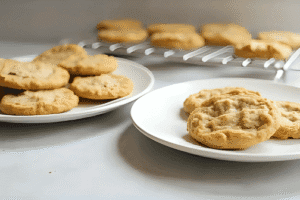
🌀 Incorrect Mixing Method
How Incorrect Mixing Makes Cookies Hard
Mixing isn’t just about combining ingredients — it controls how gluten forms, how air is incorporated, and how fats are distributed. If you undermix, the fat and liquids may not blend well, leading to uneven texture. If you overmix, especially after adding flour, excess gluten development can make cookies dense and tough.
The creaming step (beating butter and sugar together) is especially critical. Over-creaming can cause cookies to spread too much, while under-creaming prevents enough air from forming, making them compact and hard.
Expert Insight: For most cookie recipes, mix just until combined after adding flour — the dough should be uniform but not overworked.
🛠 How to Fix Incorrect Mixing
- Follow the recipe’s mixing times — especially for creaming butter and sugar.
- Use room temperature ingredients for even blending.
- Switch to a spatula for the final flour stage to prevent overmixing.
- If using a stand mixer, use low speed when adding dry ingredients.
🔗 Pro Tip: Why Is My Cookie Dough Too Sticky or Wet?
💡 Pro Tip from 17 Years of Baking
When baking in bulk, divide the dough into smaller batches for mixing. This prevents overworking one large batch and keeps texture consistent across trays.
🏭 Industry Example
In commercial bakeries, mixers have timers and speed controls to ensure uniform dough texture. Overmixing even by a minute can lead to a chewy, bread-like cookie instead of a tender bite.
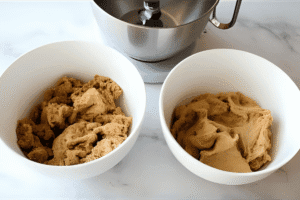
🌡 Wrong Oven Temperature
How Wrong Temperature Makes Cookies Hard
Oven temperature plays a critical role in cookie texture. If the oven is too hot, the outside sets quickly while the inside doesn’t have enough time to spread and soften, leading to a dry, hard surface. If the oven is too cool, cookies may overbake while you wait for them to brown, losing moisture and turning tough.
Cookies need the right heat to balance spread, rise, and moisture retention. Even a 10–15°C variation can noticeably change the texture.
Expert Insight: Always preheat your oven fully before baking. An uncalibrated oven can be 20–30°C off, so using an oven thermometer is essential.
🔗 Related: Why Do Cookies Burn on the Bottom?
🛠 How to Fix Wrong Oven Temperature
- Preheat your oven for at least 15–20 minutes before baking.
- Use an oven thermometer to verify actual temperature.
- Follow the recipe’s baking temperature closely — don’t “guess” bake.
- Bake in the center rack for even heat distribution.
💡 Pro Tip from 17 Years of Baking
If baking multiple trays, rotate them halfway through baking to avoid hot spots. Inconsistent heat is a common cause of uneven, hard cookies in both home and professional kitchens.
🏭 Industry Example
Commercial bakeries regularly calibrate ovens to ensure precise temperatures for every batch. Even a small temperature shift can affect thousands of cookies — so strict monitoring is standard practice.
💡 Pro Tips for Managing Hard Cookies
If your cookies consistently turn out harder than you’d like, try these proven techniques to bring back the perfect bite:
- Weigh Your Ingredients – A kitchen scale ensures flour, sugar, and butter ratios stay accurate, preventing texture problems.
- Use Room Temperature Butter – Cold butter won’t cream properly, leading to dense cookies.
- Check Oven Temperature with a Thermometer – Even slight overheating can overbake cookies, making them crisp instead of soft.
- Add a Touch of Cornstarch – Replacing 1–2 tablespoons of flour with cornstarch can make cookies more tender.
- Slightly Underbake – Remove cookies from the oven when the edges set but centers still look soft; they’ll finish cooking on the tray.
- Adjust Cooling Method – Let cookies cool on the tray for just 2–3 minutes, then transfer to a rack to avoid excess hardening.
- Use Brown Sugar for Moisture – Swap part of the white sugar for brown sugar to retain softness.
Pro Insight: Store cookies with a slice of bread in an airtight container — the bread releases moisture, keeping cookies soft for days
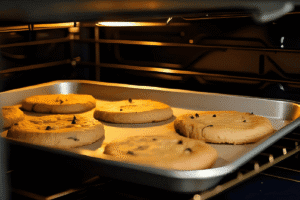
🏁 Final Thoughts
Hard cookies can be disappointing, especially when you were expecting a soft, tender bite.
By identifying the exact cause — whether it’s too little fat, incorrect mixing, wrong oven temperature, or any other factor — you can make small but powerful adjustments to achieve perfectly textured cookies every time.
Remember, precision matters in baking. From measuring ingredients accurately to using the right mixing method and oven settings, each step contributes to the final result.
Baker’s Wisdom: Keep a small baking journal to note ingredient brands, oven temperature settings, and mixing times — this helps you troubleshoot and improve over time.

